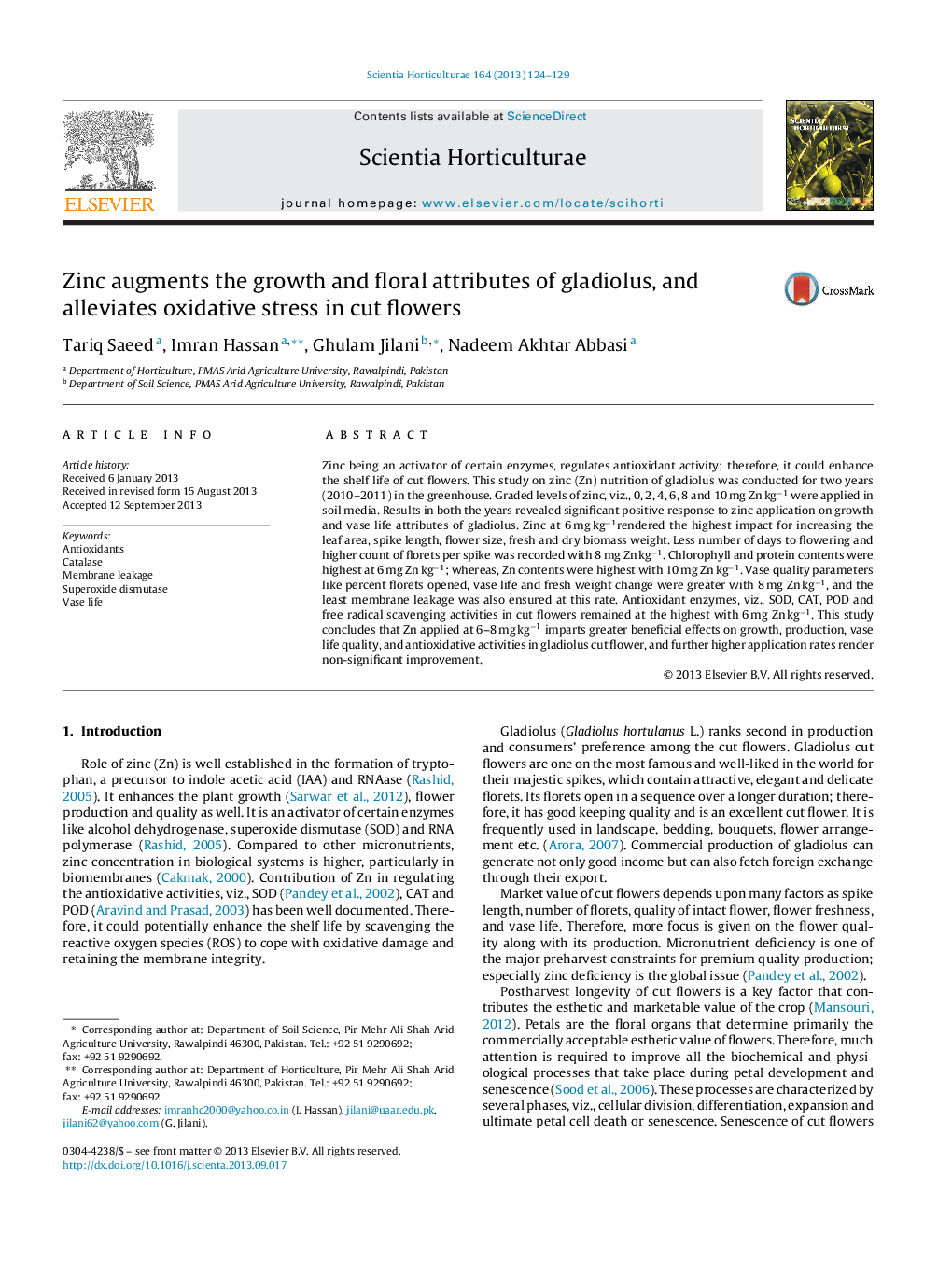| Article ID | Journal | Published Year | Pages | File Type |
|---|---|---|---|---|
| 4567049 | Scientia Horticulturae | 2013 | 6 Pages |
•Zinc affected the growth and postharvest attributes of gladiolus cut flowers.•Physiological correlation exists between zinc and vase life of cut flowers.•Antioxidative activity in cut flowers increased by improving zinc nutrition.•Optimum zinc level retained higher water relations and cell membrane integrity.
Zinc being an activator of certain enzymes, regulates antioxidant activity; therefore, it could enhance the shelf life of cut flowers. This study on zinc (Zn) nutrition of gladiolus was conducted for two years (2010–2011) in the greenhouse. Graded levels of zinc, viz., 0, 2, 4, 6, 8 and 10 mg Zn kg−1 were applied in soil media. Results in both the years revealed significant positive response to zinc application on growth and vase life attributes of gladiolus. Zinc at 6 mg kg−1rendered the highest impact for increasing the leaf area, spike length, flower size, fresh and dry biomass weight. Less number of days to flowering and higher count of florets per spike was recorded with 8 mg Zn kg−1. Chlorophyll and protein contents were highest at 6 mg Zn kg−1; whereas, Zn contents were highest with 10 mg Zn kg−1. Vase quality parameters like percent florets opened, vase life and fresh weight change were greater with 8 mg Zn kg−1, and the least membrane leakage was also ensured at this rate. Antioxidant enzymes, viz., SOD, CAT, POD and free radical scavenging activities in cut flowers remained at the highest with 6 mg Zn kg−1. This study concludes that Zn applied at 6–8 mg kg−1 imparts greater beneficial effects on growth, production, vase life quality, and antioxidative activities in gladiolus cut flower, and further higher application rates render non-significant improvement.
